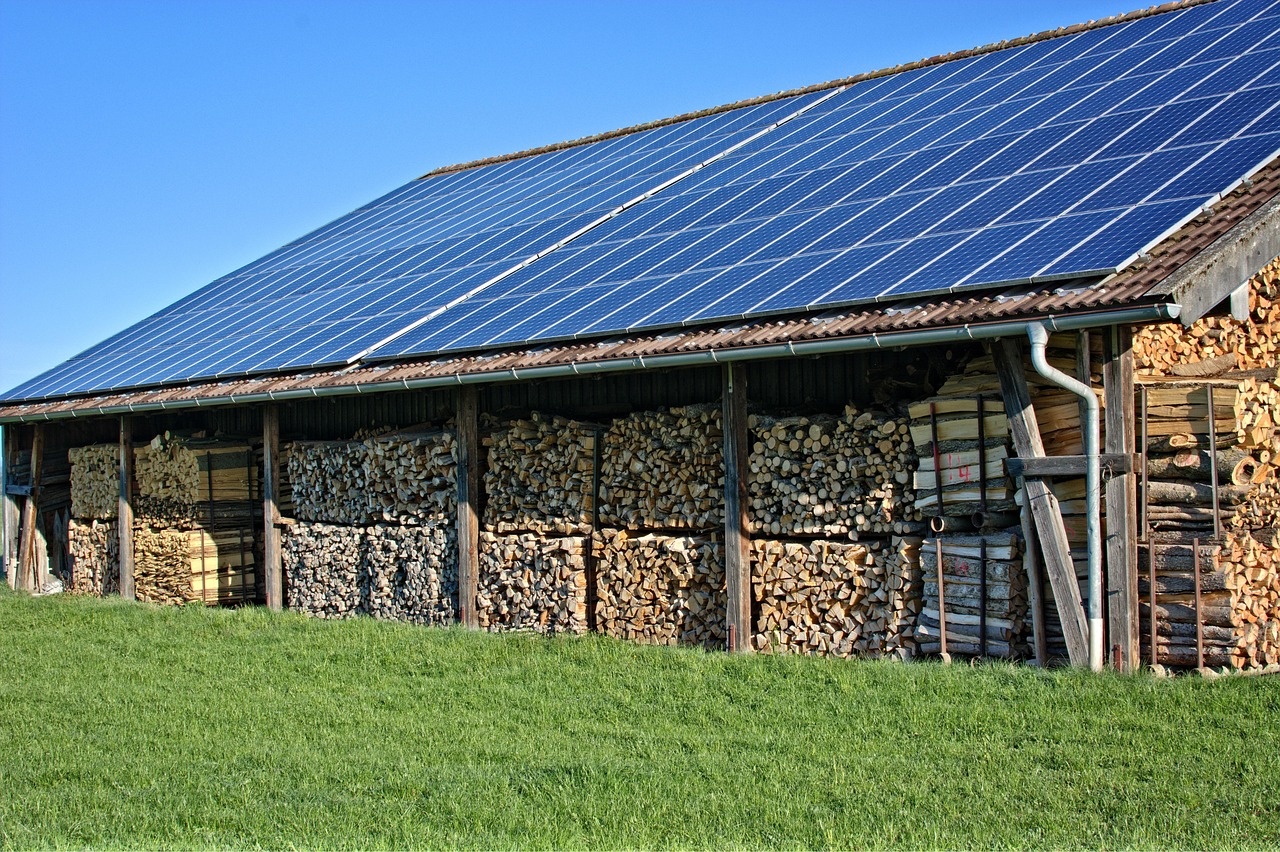
Introduction
## Solar Power Is Transforming Global Energy Systems. The key point is that solar power has shifted from a niche, alternative energy source to the fastest-growing and most cost-efficient form of electricity generation worldwide. After nearly seven decades since the first practical photovoltaic cell was invented in 1954, solar power reached its first terawatt of installed capacity only in
2022. Remarkably, the second terawatt was achieved just two years later, and the third is expected imminently. This means that solar panels are now being installed at a rate of one gigawatt every fifteen hours, equivalent to the output of a large coal-fired power plant. This rapid growth reflects a historic energy transition, as solar power and wind—both ultimately derived from the sun—dominate new electricity capacity worldwide, meeting 96 percent of global demand for new power in 2024.
U
S. Renewable Capacity Surpasses Fossil Fuel Growth. In the United States, the renewable energy surge is even more pronounced. In 2024, 93 percent of new electricity generating capacity came from solar, wind, and battery storage. For the first time in March 2025, fossil fuels accounted for less than half of U. S. electricity generation. California exemplifies this transformation: on May 25, 2025, renewables produced 158 percent of the state’s power demand at one point, and over the entire day, they supplied 82 percent of electricity. This was made possible by a 76 percent increase in battery storage capacity, allowing renewables to supply power even when the sun is down or the wind is calm. Consequently, California reduced natural gas use for electricity by 40 percent compared to 2023, a significant milestone in climate mitigation efforts.

Texas Accelerates Renewable Expansion Despite Challenges
Texas is rapidly catching up, installing renewable energy and batteries faster than California. In March 2025, it set records for solar, wind, and battery discharge in a single week. During a near-record early-season heat wave in May, renewables supplied over 25 percent of the state’s electricity, maintaining grid stability despite high demand from air conditioning. The Texas utility system director reported that emergency outage risks dropped from 16 percent in summer 2024 to less than 1 percent in 2025, largely due to adding 10, 000 megawatts of solar and battery capacity. This demonstrates renewables’ increasing reliability even in extreme weather conditions, which are expected to intensify with climate change.
China Leads
China Leads Global Renewable Installation and Emission Reductions. China dominates the global renewable market, installing more than half of the world’s new renewable capacity and storage. In May 2025, China installed a record 93 gigawatts of solar power, averaging one gigawatt every eight hours. This scale has contributed to a nearly 6 percent decline in carbon emissions from electricity production in the first quarter of
2025. Furthermore, nearly half of China’s vehicle sales in 2024 were full or hybrid electric vehicles, underscoring the country’s commitment to clean energy. China’s ability to manufacture low-cost solar panels and batteries also supports renewable energy expansion in Asia, Africa, and South America, where coal plant construction plans have been abandoned.
India and Poland Show Rapid Renewable Adoption
India, the fastest-growing major economy, demonstrated in early 2025 that increased solar power kept coal consumption flat and reduced natural gas use by 25 percent compared to previous years. Meanwhile, Poland, historically reliant on coal, saw renewable energy generation surpass coal in May 2025 due to a surge in solar installations. Poland has already tripled its 2030 photovoltaic power targets well ahead of schedule, reflecting a broader global trend of rapid renewable uptake beyond traditional energy powerhouses.

Battery Storage Costs Plummet Enabling Grid Stability
A critical enabler of renewable energy growth is battery storage, which saw costs drop by 95 percent over the past 15 years, largely due to Chinese advancements in manufacturing for phones, vehicles, and grid systems. Storage prices fell another 30 percent in mid-2025 during competitive bidding for Chinese utility projects. The world is adding 80 gigawatts of grid-scale storage in 2025—an eightfold increase from 2021—with the U. S. contributing 4 gigawatts during the first half of 2024 alone. Large-scale batteries now provide power for entire cities during low renewable generation periods, smoothing variability and reducing reliance on fossil fuels.

Other Technologies Remain Secondary to Renewables
While nuclear, hydrogen, and carbon capture technologies receive investment and policy support, they remain statistically overshadowed by the rapid expansion of solar, wind, and battery storage. The U. S. Inflation Reduction Act spurred growth in these sectors, but recent congressional rollbacks, including President Donald Trump’s “Big Beautiful Bill, ” threaten to reverse progress by cutting tax credits for solar panels and electric vehicles. The Rhodium Group estimates that these legislative changes could reduce U. S. clean electricity production by up to 72 percent by 2035 compared to current law projections, highlighting political resistance to the energy transition despite clear economic and environmental benefits.
Historical Context Explains Current Energy Debates
The U. S. energy system’s postwar development centered on cheap fossil fuels, creating a sprawling suburban infrastructure reliant on oil and gas. Donald Trump’s attachment to petroleum reflects this legacy, referring to oil as “liquid gold.” However, the solar revolution began quietly in 1954 at Bell Labs with the creation of the first practical photovoltaic cell, initially converting only 6 percent of sunlight into electricity. Despite early high costs limiting solar use to space applications, steady price reductions followed decades of incremental innovation and policy support, such as President Jimmy Carter’s energy initiatives and Germany’s early 2000s subsidies that launched large-scale solar manufacturing in China.

Solar Power Efficiency Outperforms Fossil Fuels
Solar panels convert sunlight directly into “work energy, ” which is far more efficient than heat energy from burning fossil fuels. According to a Rocky Mountain Institute report, fossil fuel energy conversion efficiencies rarely exceed 30 percent, meaning 70 percent of energy is wasted as heat. Electric vehicles charged even from coal-fired grids outperform internal combustion engine cars in efficiency by a factor of two to three. E-bikes offer even greater efficiency; charging a 500-watt e-bike costs about eight cents and provides roughly thirty miles of range, equating to about one cent per five miles traveled. This efficiency advantage underscores the transformative potential of solar-powered electrification in reducing energy waste and emissions.

Renewable Energy
Renewable Energy Growth Challenges Geopolitics and Autocracy. The widespread availability of solar and wind energy represents a fundamental geopolitical shift. Unlike fossil fuels, which are concentrated in specific regions and have historically driven global power dynamics and conflicts, renewable energy sources are ubiquitous and difficult to monopolize or weaponize. The sun provides tens of thousands of times more energy than current global consumption, offering a potential path to energy abundance and reduced geopolitical tension. This shift threatens entrenched fossil fuel interests, explaining much of the political backlash seen in the United States and elsewhere.

Conclusion Renewables Offer Hope Amid Climate Crisis
The rapid growth of solar power and complementary renewables marks a pivotal moment in the global energy transition. With solar capacity doubling every two years and battery storage enabling grid reliability, the world is moving toward a cleaner, more efficient, and more equitable energy system. Despite political resistance, especially in the United States under President Donald Trump’s administration, the data shows renewables are reshaping economies and reducing emissions at an unprecedented scale. This transformation offers a plausible path to mitigate the climate crisis and reduce reliance on fossil fuels that have long defined global power and conflict.


